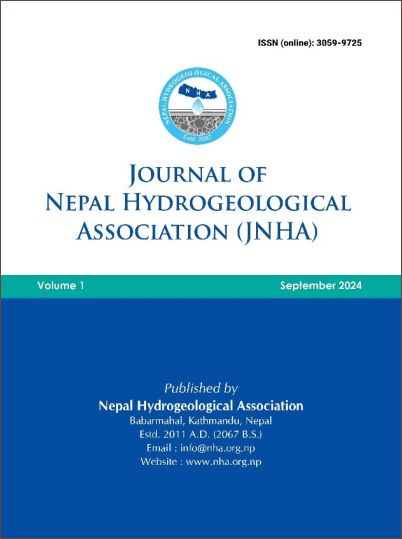Hydrological influences of the landslide mechanisms: insight into the Aakhu Khola Watershed, Dhading District, Nepal
DOI:
https://doi.org/10.3126/jnha.v1i1.78223Keywords:
Hydrological control, Landslide, stream power index, topographical wetness indexAbstract
This study aims to determine the role of hydrological factors that influence landslides in the Aakhu Khola watershed in Dhading District, Nepal. The effort commenced by using satellite imagery and ArcGIS to create a spatial and temporal landslide inventory map. The four hydrological factors map was created using a 12.5 m digital elevation model, and a rainfall map was prepared using IDW interpolation of ten years of rainfall. The pixel size of the factors' subclasses and the pixel size of landslides within the subclasses were determined. The activity state landslide inventory map was used to ascertain the influence of rainfall on the occurrence of landslides. A regression study was performed to determine the significant relation between rainfall and landslides. The frequency ratio value was used to evaluate the correlation between landslides and the corresponding components. There is a significant positive correlation between the total annual rainfall and the total annual landslide from 2010 to 2023. The active and recent landslides exhibit a significant correlation with yearly precipitation. The linear regression analysis reveals a strong correlation between activity stages and rainfall, indicating a close relationship between the two variables. The frequency ratio value is greater at a distance of 100 meters from the drainage. The occurrence of landslides is inversely connected to the topographical wetness index but directly related to the stream power index. There is a positive association between the drainage density and landslides. All the results indicate hydrological control over the landslide mechanism in the study area.




